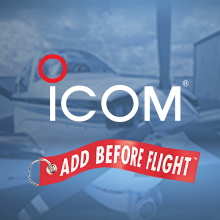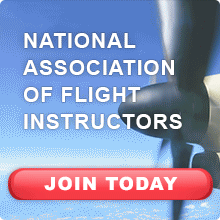| From NAFI's Chair |
Teaching the World How to FlyIn both eMentor and Mentor magazine, I have gone out of my way to avoid telling you what my favorite products might be. I consider this both good manners and good business. Good manners because my opinion is just that - my opinion. I'm sure that in a group as large as NAFI's membership, someone will differ with me and I just don't see a reason to needlessly offend anyone. It's good business because we have many sponsors, some of whom compete for your dollars, and I don't want to be perceived as endorsing, or give the impression that NAFI is endorsing, one fine product over another. These are choices you make as individuals. Because the exception often proves the rule, and because a headline caught my eye, I'm going to deviate from my policy. EAA recently issued a press release saying it would be honoring the Boeing 747's 50th anniversary at AirVenture 2019. I will say, without apology to anyone, and with all due respect to the fans of the Constellation, DC-3, L1011, Airbus, etc., that the Boeing 747, in all its variants, is the most beautiful transport category aircraft ever built, bar none. The only concession I'll make in this regard is the Dreamlifter - its beauty is on the order of that of the Super Guppy, mainly because their form fills a very special function. The thing that is so special about the 747 is that it, more than the other aircraft of its era, changed the model of the airline business, driving seat costs down and making passenger aviation more available to everyone. A great corporate history that bears this out, as well as a fun read, is Jumbo: The Making of the Boeing 747 (formerly Wide Body: The Triumph of the 747) by Clive Irving. It is this aircraft that heralded the current age of relatively inexpensive passenger and cargo hauling flights. We think nothing of traveling across the country or between continents today, not to mention having items delivered to us within two or three days for free, or even the next day for a nominal charge. What does this have to do with flight instruction? Well, for one thing, for my generation the 747 was the iconic, "I'm going to fly that airplane someday." In fact, NAFI Board Member Craig O'Mara flew thousands of hours in the 747, both for a major carrier and for NASA before recently retiring. At his airline, he was a check airman in the 747-400, ensuring that both new and experienced crews were both safe and proficient. When he flew the SOFIA for NASA, he literally flew the same airframe that he flew when it was at his airline, yet even he had to go through training from NASA instructors before he could command missions. Of course, this all leads up to the fact that everyone who aspires fly a transport category aircraft must start somewhere and then be continually trained once they reach their goal. That's where we come in as instructors. We set the initial standards and the habits of a lifetime. We are the first to instill professionalism and pride in being a pilot, and we are the ones who maintain the standard. And even if a pilot "only" wants to fly a piston single or glider, I proudly say that we are the ones who help them build a lifetime of safe habits. So, here's to the Queen of the Skies and her builders and designers at Boeing who inspired me 50 years ago when she first took to the air on February 9, 1969 and went on to change the world when Pan American inaugurated service on January 22, 1970. And also to the men and women who have and continue to teach the world how to fly. Bob Meder,
NAFI Board Chair
|







